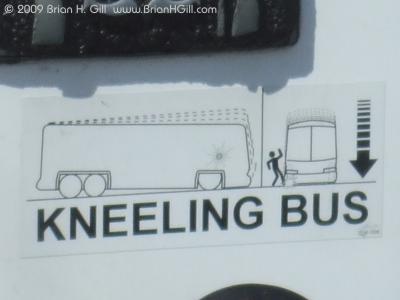- 'The Environmental Protection Agency (EPA) proposes revisions to the National Ambient Air Quality Standards for Ground-Level Ozone' - This would strengthen the "primary" (designed to protect public health) and "secondary" (designed to protect sensitive vegetation and ecosystems) ozone standards, which could place Florence County in a non-attainment status. Florence County is currently marginally in attainment.
The Florence Area Transportation Study (FLATS) is the metropolitan planning organization for this area. The federal requirements and regulations on transportation planning for a metropolitan area in non-attainment will be strict. Everyone's support will be needed. The new standards are scheduled to be released by July 31, 2011. I'll keep you posted. In the meantime, if you'd like to learn more about this, take a look at EPA's website.
- 'Alternative transportation and a multi-modal roadway network' - This is so important for all Florence County residents. Whatever your choice or necessity is for getting around in our awesome county, it should be easy and readily available for you. So let us know your thoughts on areas in our county that need transportation related enhancements.
Let me share the most recent resident request and the positive outcome. Some county residents whose choice of transportation is via bicycle utilize Highway 51 (Pamplico Hwy.) to reach their place of employment. The request was for more sidewalks. Well, SCDOT had a resurfacing project scheduled for Pamplico Hwy. from Freedom Blvd. to Howe Springs Rd. to be contracted out by the end of December, 2010. So, we contacted them regarding this request. No new sidewalks were included in the contract, only repairs to the existing ones. However, SCDOT advised if the City of Florence and Florence County desired, during the resurfacing project, they could enhance this roadway to a shared-use facility. The road is not wide enough to mark a bike lane, but the outside lanes could be widened to 14' to accommodate bicyclists. (like Hoffmeyer Rd.) The city and county have formally made this request to SCDOT, so look for this improvement soon. The resurfacing completion date is tentatively September 30, 2011.
- 'Sustainability, Smart Growth, Livable Communities' - Yep, you've heard quite a bit about this and I told you it was just the beginning! There's a good possibility these initiatives could become federal regulations. The American Planning Association (APA) recently held a Federal Policy and Program Briefing and Planners' Day on Capital Hill. Take a look at the accomplishments of the last 20 months through the lens of APA's board-adopted legislative priorities:
- Support federal initiative promoting community livability and sustainability through enhanced planning;
- Adopt comprehensive climate change legislation that supports planning to reduce greenhouse gas emissions and address local adaptation;
- Transform federal transportation policy;
- Invest in rebuilding America's infrastructure;
- Help communities promote job creation, increase economic competitiveness, and build strong neighborhoods by taking innovative approaches to housing and community development policy;
- Promote energy efficient communities;
- Provide high-quality federal data for local decision making;
- Protect local planning authority;
- Advance the development of healthy, safe and active communities;
- Encourage strategic and sustainable investment through location-efficiency standards and expanded regional planning;
- Improve policies aimed at addressing the unique environmental, economic, and safety needs of coastal areas.
Wow, that's a mouthful! Each of these priorites are explained in APA's November edition of their planning magazine which can be accessed on APA's website. The goals in the recently updated elements of the Florence County Comprehensive Plan address many of APA's priorities in addition to other issues that are significant in order to achieve positive growth for our county.
So that's an off-the-top-of-my-head recap of 2010. Stay tuned for more to come in 2011! Happy New Year and thanks to all of our Florence County Planning blog followers.























